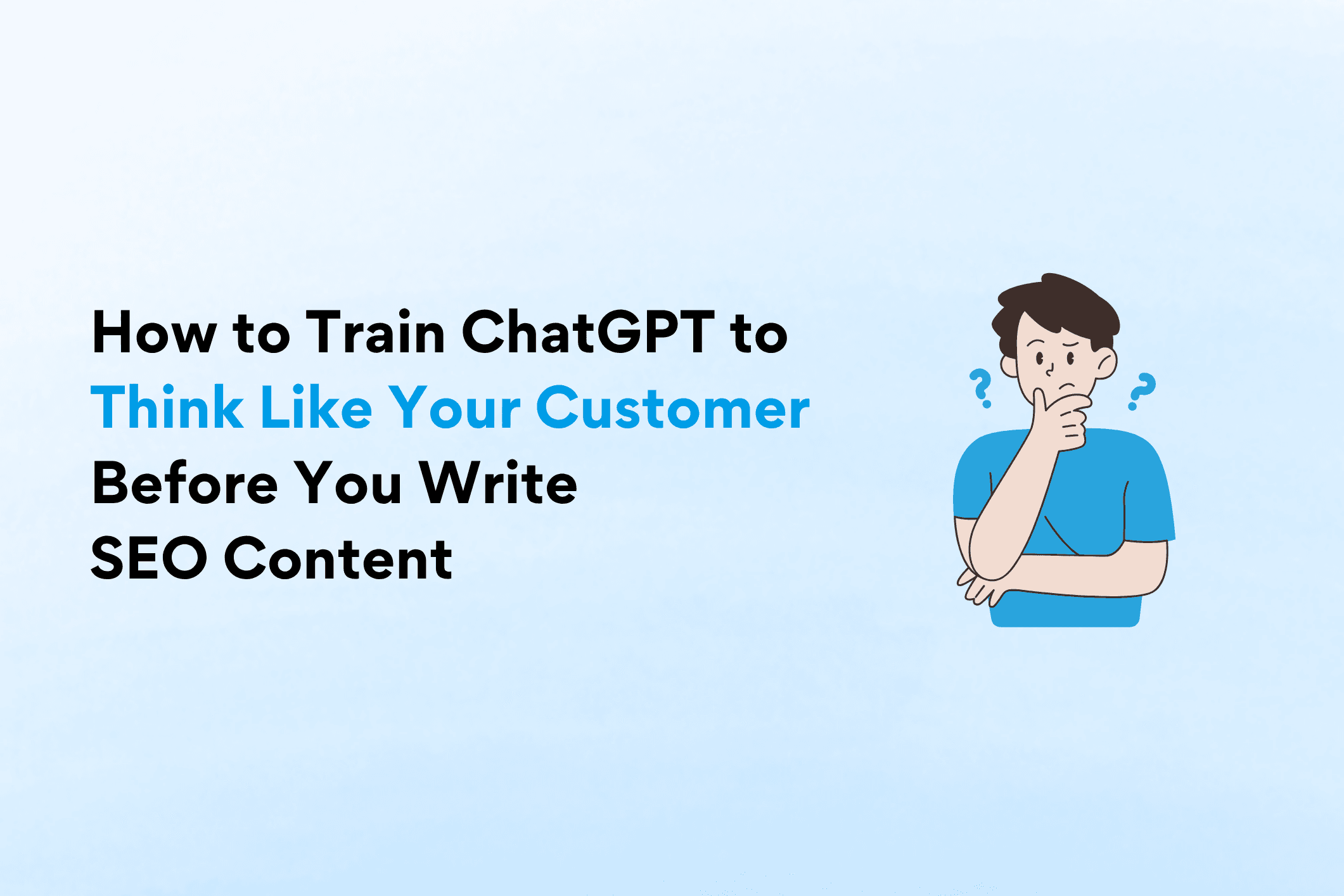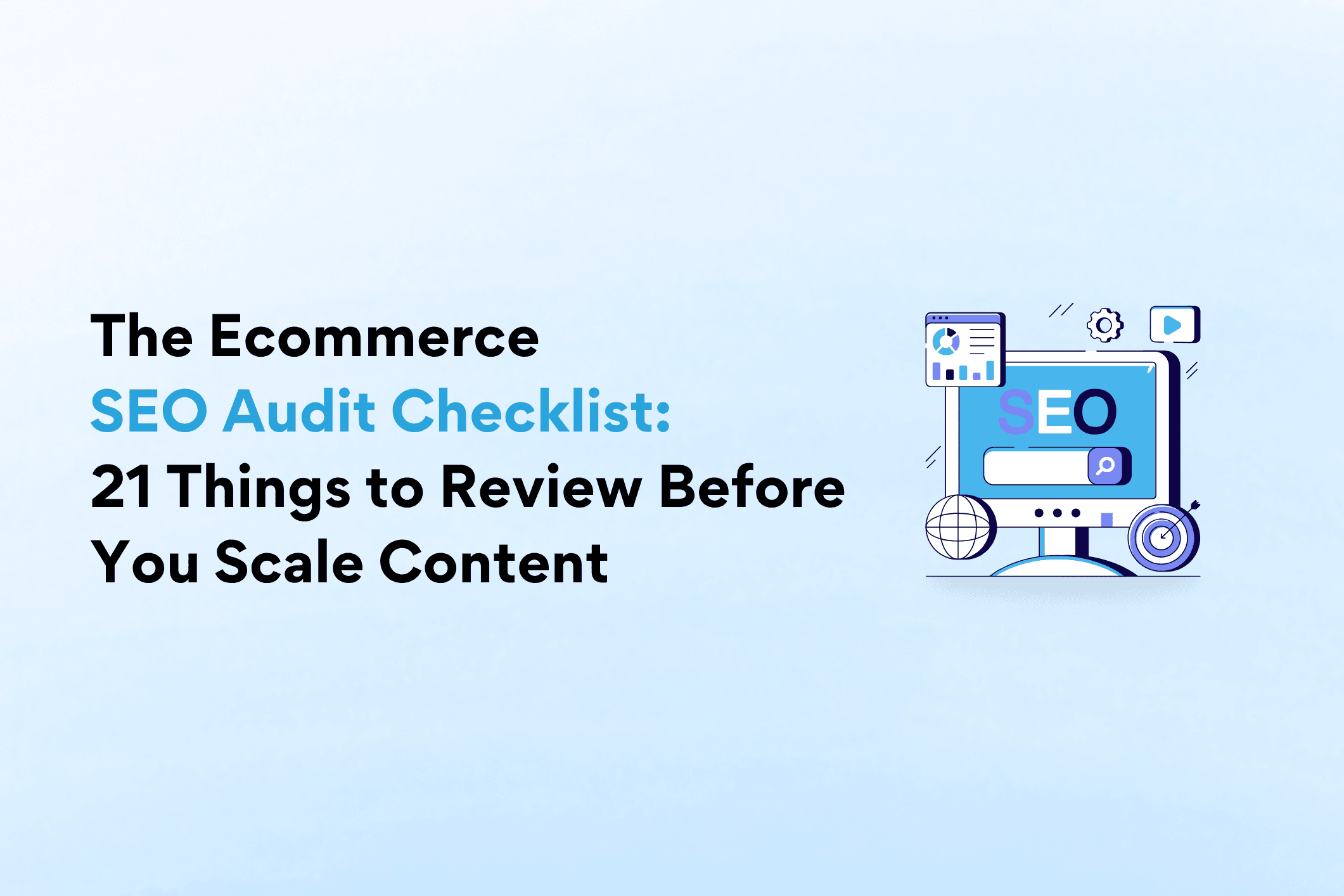For ecommerce marketers in 2025 and beyond, the most profitable SEO content doesn’t start with a keyword; it starts with the customer. If your content ranks but doesn’t resonate, you’re leaving conversions on the table. In our current content-saturated market, relevance isn’t optional. It’s the difference between traffic that bounces and traffic that buys. While traditional SEO tools surface keywords and volume, they rarely capture the nuance of what your customers are actually thinking, feeling, or asking when they’re shopping. That’s where ChatGPT becomes a powerful advantage, if you train it correctly.
This post walks you through how to “train” ChatGPT to think like your customer so you can write content that matches real intent, builds trust faster, and drives more sales.
Why Customer Insight Beats Keyword Data Alone
Marketers have relied on keyword research for decades, and it’s still a critical part of the SEO process. But keyword data alone has serious limitations. It tells you what people are searching, but not why they’re searching, how they describe their problems, or what language actually moves them toward purchase. When you rely purely on volume-based data, you risk optimizing for robots instead of humans.
Here’s what keyword data won’t show you:
- A 3,600-volume keyword like “organic shampoo” could be used by a mom researching safe products for her kids or a Gen Z shopper looking for haircare that matches her sustainability values.
- Phrases like “best mattress for back pain” don’t reveal what “best” means to the searcher… price, materials, reviews, or trial period?
That’s where training ChatGPT to simulate your customer’s mindset pays off. With the right prompts, you can surface pain points, decision criteria, and emotionally charged phrasing in seconds, giving your content a massive relevance advantage over competitors who are still just “sprinkling in keywords.”
Build a Customer Persona Prompt
To unlock accurate and useful insights from ChatGPT, you have to first give it the context it needs to think like your ideal customer. That’s where a rich, well-crafted persona prompt comes in. This isn’t your basic marketing persona; it’s a working brief that trains ChatGPT to step into the customer’s shoes and simulate their thought process with specificity and clarity.
When writing your prompt, include:
- Demographics: Age, gender, job, family situation, income… anything that shapes how they buy.
- Goals: What are they trying to accomplish with this product? What transformation are they hoping for?
- Frustrations: What has annoyed or confused them in previous buying experiences?
- Objections: What might make them hesitate… price, trust, quality, complexity?
- Buying Context: Are they buying for themselves or as a gift? Are they a first-time buyer or replacing a product?
- Tone and Vocabulary: How would they describe their needs to a friend? Do they speak plainly or technically?
Here’s a real example prompt that I put together for one of my clients:
You are a 34-year-old mom of two shopping for your first jogging stroller. You’re worried about safety, confused by the product specs, and unsure whether a $450 investment is worth it. You drive a small SUV and live in a walkable city. Write the types of things you’d search for on Google, and answer them in your own words.
This depth transforms generic AI output into rich, empathetic content foundations. It turns GPT from a writing assistant into a customer research tool.
Use ChatGPT to Simulate Buyer Questions
With your persona in place, the next step is getting ChatGPT to generate the kinds of questions your customer is likely to ask during their journey from awareness to purchase. These aren’t just keyword ideas, they’re the raw material for your page structure, FAQs, blog posts, and even comparison tables.
Try prompts like:
What would [persona] type into Google while researching [product or category]?
You’ll get emotionally grounded, long-tail queries that reveal real buyer concerns, like:
- Are jogging strollers safe for newborns?
- How to know if a stroller fits in my trunk?
- Do I really need a jogging stroller or is a regular one fine?
Use these outputs to:
- Shape your H2s and H3s for long-form blog posts and category pages
- Add FAQs with schema markup to improve visibility in Google’s AI Overviews
- Guide product comparison or “best of” listicles that match buyer context
Pro Tip: Validate these with:
- Live chat and support ticket transcripts
- User-generated content and product reviews
- Post-purchase surveys and customer interviews
When you blend AI simulations with real buyer data, you stop writing content that simply ranks and start writing content that converts.
Extract Messaging Ideas from AI Responses
Beyond the questions themselves, ChatGPT’s responses can reveal messaging gold. You’ll find patterns in how your simulated customer describes their problems, aspirations, fears, and desired outcomes. These insights are critical for shaping every aspect of your content and marketing.
Here’s what to mine from GPT outputs:
- Emotional triggers: Fear of wasting money, feeling overwhelmed, desire for simplicity, safety concerns
- Phrasing patterns: “I don’t want anything too bulky,” “I just need something that works out of the box,” “I’m not a tech person…”
- Objection insights: Hesitations around price, complexity, returns, durability, trustworthiness
Apply these insights across your marketing stack:
- Meta descriptions: Speak to anxieties (“Worried it won’t fit? See how it folds in 2 seconds.”)
- Headlines and CTAs: Use real phrasing to increase scannability and engagement
- Email subject lines and ads: Echo concerns or desires to stop the scroll
This is especially useful for repurposing content:
- Turn top objections into blog post angles (e.g., “Jogging Stroller vs. Regular Stroller: Which One Is Right for You?”)
- Use pain points to drive paid ad creative and landing page copy
- Test CTA variations based on customer phrasing uncovered by ChatGPT
Train Your Team (or Your Agency) To Use This Process
Once you’ve validated this process on a few key pieces of content, it’s time to systematize it across your team. Creating alignment between SEO strategists, content writers, and product marketers ensures consistent, customer-first messaging across every touchpoint.
Here’s how to scale it:
- Create a prompt template that your team can customize for each product or persona
- Use it in creative briefs for internal writers or freelancers so every piece starts with empathy, not just search intent
- Compare AI output with real conversion data: Are people resonating with this angle? Did bounce rates improve?
- Keep refining your persona prompts based on survey data, return reasons, and top reviews
This builds a scalable, repeatable process for creating content that goes beyond keywords, one that speaks your customer’s language and earns their trust from the first click.
Most ecommerce content fails because it’s optimized for Google, not the buyer. But as search evolves, especially with AI Overviews and LLM-powered discovery, understanding how your customer thinks is your unfair advantage. Training ChatGPT to think like your customer bridges the gap between SEO and psychology, giving you the insights you need to rank and resonate.
This approach is simple but powerful:
- Build a rich customer persona prompt.
- Use ChatGPT to simulate questions and phrasing.
- Extract emotion-driven messaging and repurpose it across your funnel.
- Train your team to do it consistently.
The brands that adapt to this new way of creating content will dominate search, because they’re not just answering queries, they’re engaging with real people.
Greg is a digital marketing strategist, ecommerce owner, e-commerce marketing agency owner, and recognized leader in the D2C industry.
With 18 years of experience working with small, medium, and large organizations, Greg knows how to build and execute marketing strategies that drive growth.



